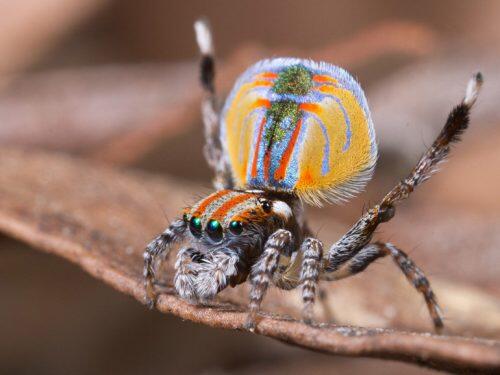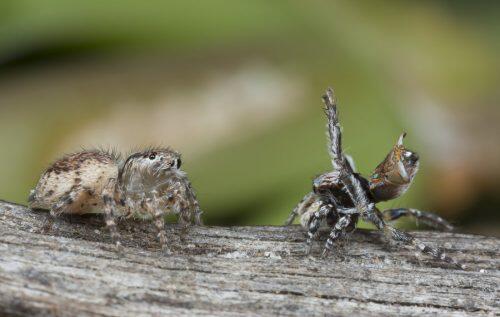Spiders are scary insects for many people around the world, but there is this type of them, which keeps everyone staring at them, especially with the “dance moves” they perform.
Yes, they are “dancing” peacock spiders, and seven new species of these spiders were discovered by an Australian biologist on Sunday.
Jurgen Otto has discovered seven new species of peacock spiders that are enchanting even the most extreme arachnophobes, Huffington Post reported.
Dr. Otto collected and photographed the new species along the south coast of Western Australia and South Australia with colleague and spider expert, David Knowles.He published the findings in the jumping spider journal Peckhamia alongside co-author David Hill, bringing the total number of confirmed peacock spider species within the Maratus gene to 48.
At a tiny size of 2.5 to 5 millimetres in length, they are not easy to find, says Otto, “but when we do, it is truly striking”.
He added that “Each one of these species has an interesting mating behaviour. The males usually have flaps on the side of the body that they can expand to reveal their colourful, patterned abdomen.”
These insects seem to have their own preference when choosing a male to mate with as well. The only attraction and condition for the “lady spider” to mate with the “male”, is the color she likes.
“The female sits close to the male and watches him, and if a female likes a particular colour or variant, she will mate with that male. That is how these beautiful patterns evolve.”
“They’re fairly cute, which is why people are attracted to them,” Otto said.
“They behave very differently to how people think a spider does … they behave more like cats and dogs, moving around, perceiving and reacting to their environment.”
Otto has a Facebook page dedicated to the colourful arachnid, which has more than 61,000 followers. He also a YouTube channel, which gets millions of viewers.
The biologist sees that it’s important to document all of these spiders and their behavior, and he also “wanted there to be a public record.”
The spider lover has even dedicated a spare bedroom to his “spider work”. He tells the Guardian “I wish it was larger, but it’s not … this hobby sort of consumes everything.”
Otto’s day job is national mite expert for the Department of Agriculture and Water Resources.
But how hard is it to find these very little creatures? Otto says: “If you know what you’re looking for, you can find them”.
He also says that he “should be careful not to lose them, particularly the babies, and not to squash them.”















